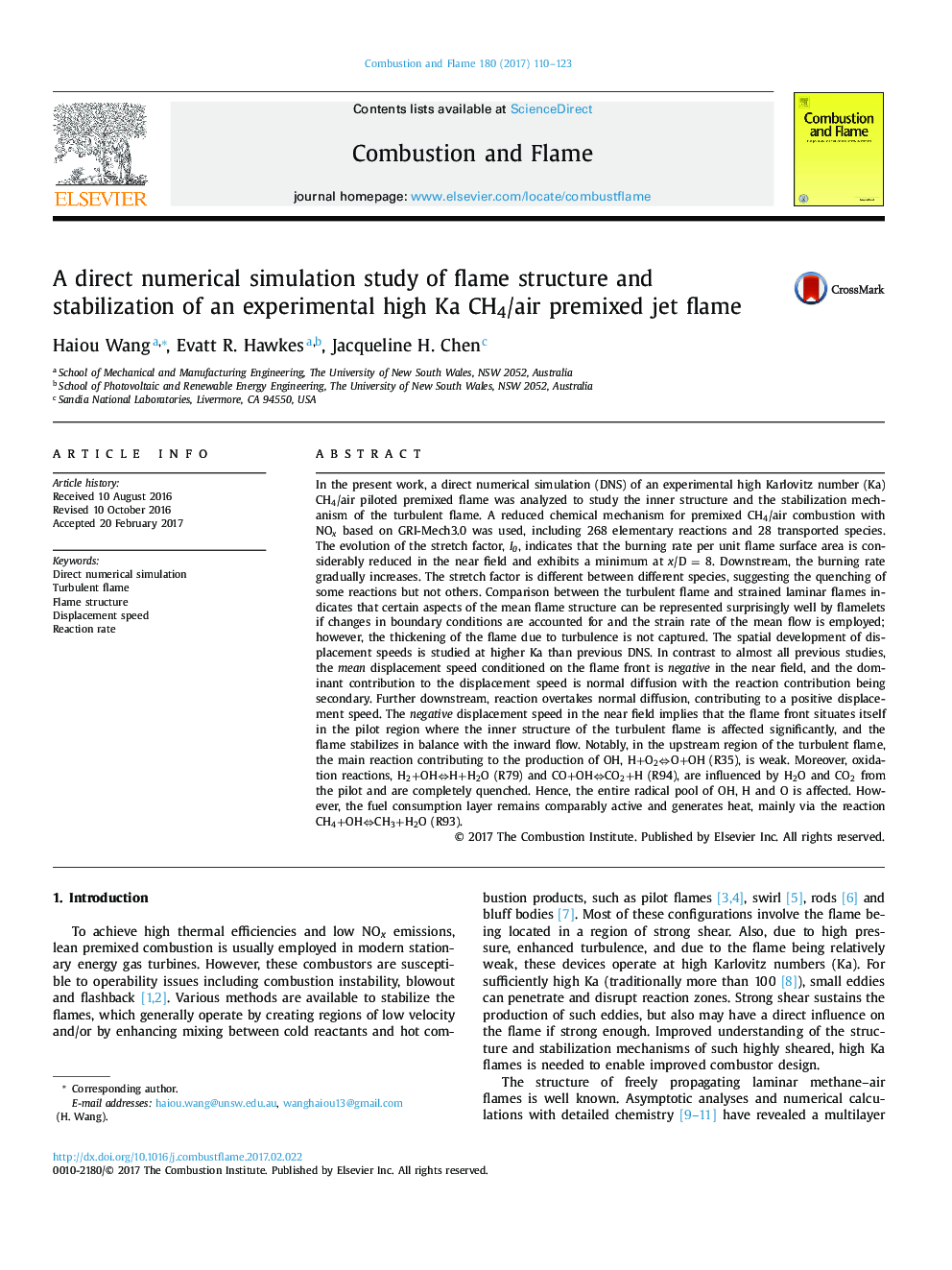| Article ID | Journal | Published Year | Pages | File Type |
|---|---|---|---|---|
| 4764380 | Combustion and Flame | 2017 | 14 Pages |
Abstract
In the present work, a direct numerical simulation (DNS) of an experimental high Karlovitz number (Ka) CH4/air piloted premixed flame was analyzed to study the inner structure and the stabilization mechanism of the turbulent flame. A reduced chemical mechanism for premixed CH4/air combustion with NOx based on GRI-Mech3.0 was used, including 268 elementary reactions and 28 transported species. The evolution of the stretch factor, I0, indicates that the burning rate per unit flame surface area is considerably reduced in the near field and exhibits a minimum at x/D = 8. Downstream, the burning rate gradually increases. The stretch factor is different between different species, suggesting the quenching of some reactions but not others. Comparison between the turbulent flame and strained laminar flames indicates that certain aspects of the mean flame structure can be represented surprisingly well by flamelets if changes in boundary conditions are accounted for and the strain rate of the mean flow is employed; however, the thickening of the flame due to turbulence is not captured. The spatial development of displacement speeds is studied at higher Ka than previous DNS. In contrast to almost all previous studies, the mean displacement speed conditioned on the flame front is negative in the near field, and the dominant contribution to the displacement speed is normal diffusion with the reaction contribution being secondary. Further downstream, reaction overtakes normal diffusion, contributing to a positive displacement speed. The negative displacement speed in the near field implies that the flame front situates itself in the pilot region where the inner structure of the turbulent flame is affected significantly, and the flame stabilizes in balance with the inward flow. Notably, in the upstream region of the turbulent flame, the main reaction contributing to the production of OH, H+O2âO+OH (R35), is weak. Moreover, oxidation reactions, H2+OHâH+H2O (R79) and CO+OHâCO2+H (R94), are influenced by H2O and CO2 from the pilot and are completely quenched. Hence, the entire radical pool of OH, H and O is affected. However, the fuel consumption layer remains comparably active and generates heat, mainly via the reaction CH4+OHâCH3+H2O (R93).
Related Topics
Physical Sciences and Engineering
Chemical Engineering
Chemical Engineering (General)
Authors
Wang Haiou, Evatt R. Hawkes, Jacqueline H. Chen,
